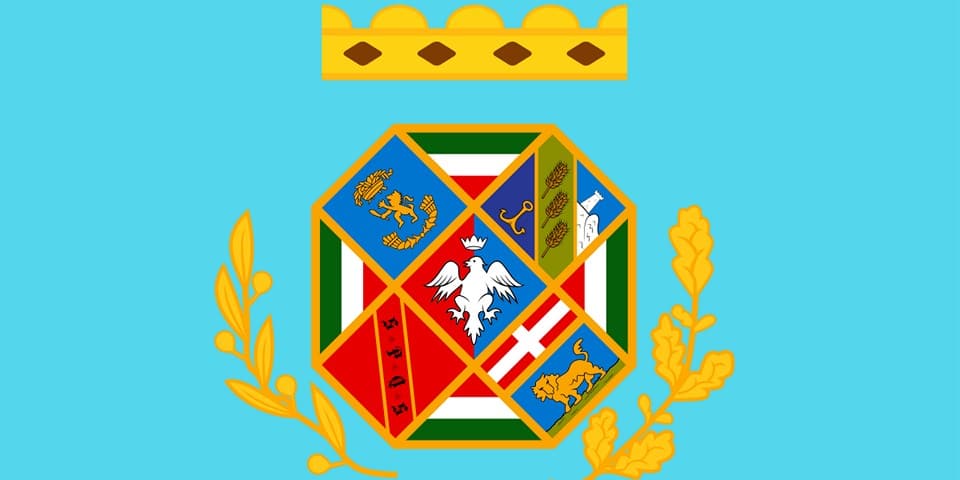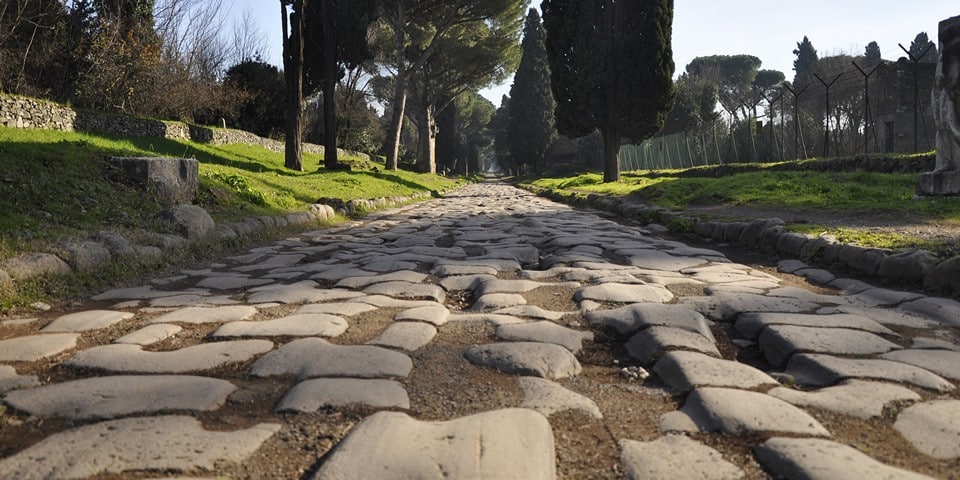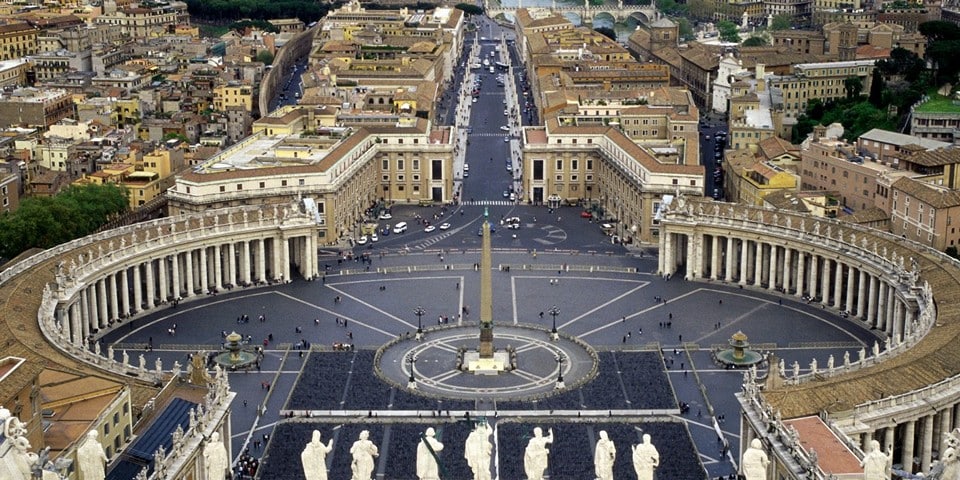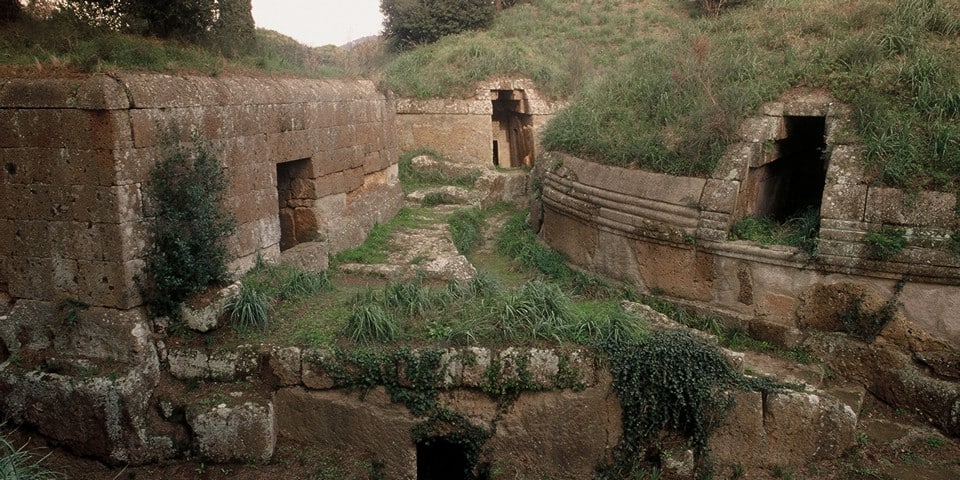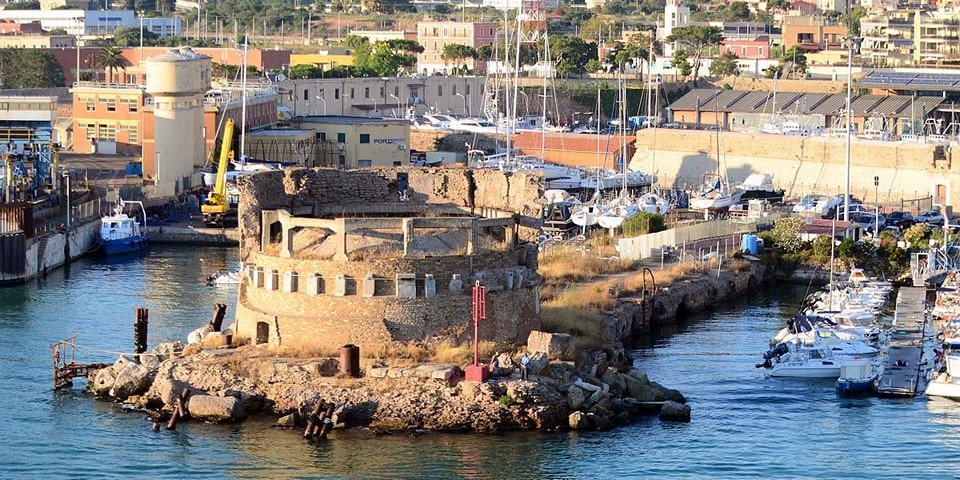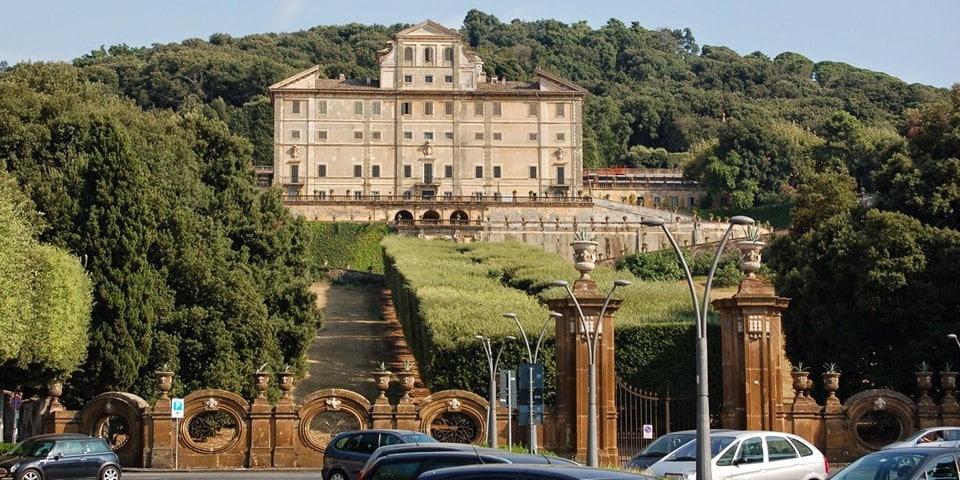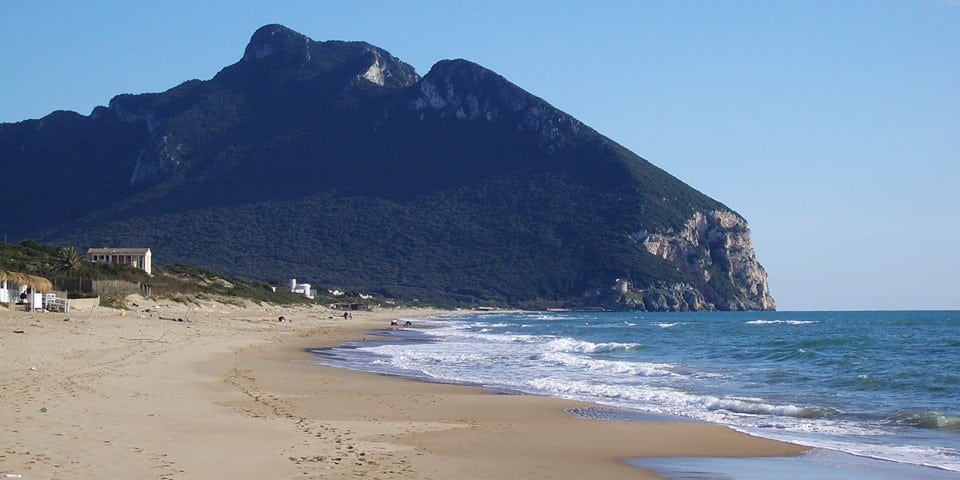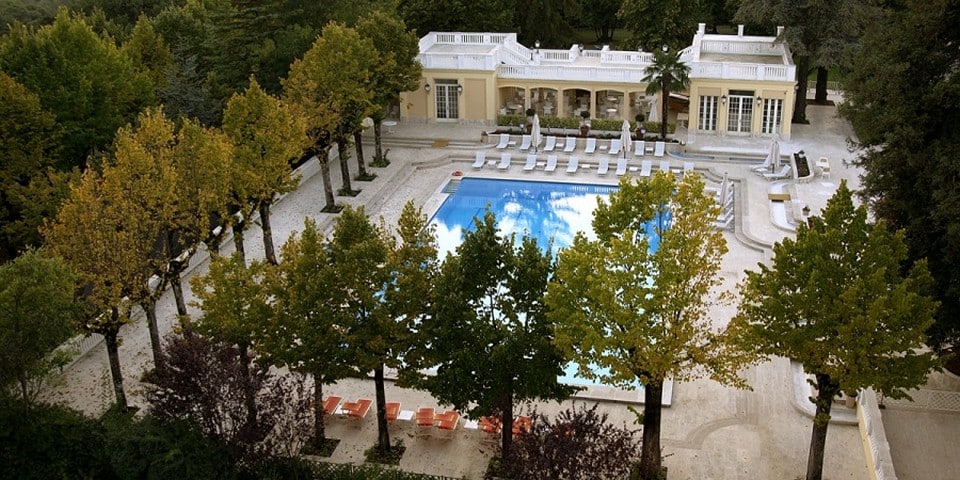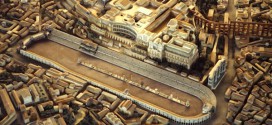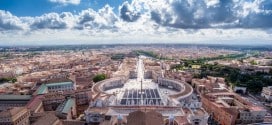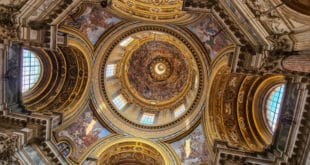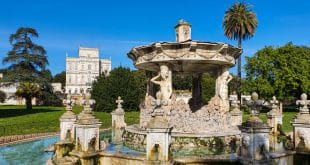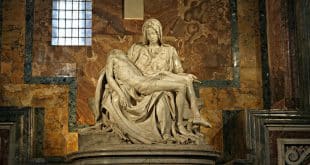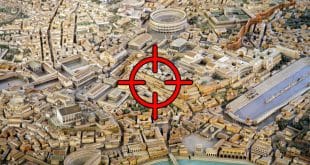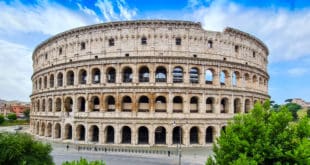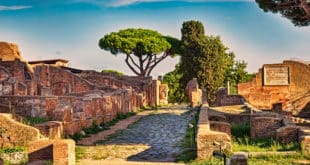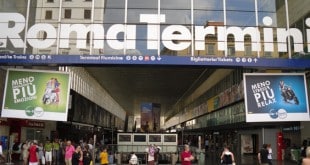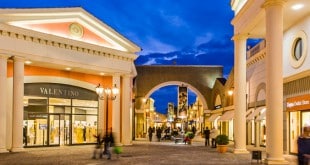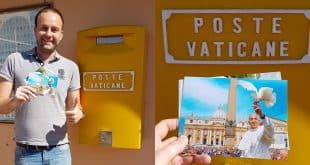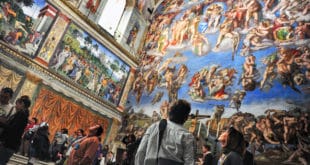Lazio
Welcome to Lazio, a region of central Italy that goes beyond the famed streets of Rome. While the Eternal City is undeniably Lazio’s crown jewel, the region is a tapestry of ancient history, verdant landscapes, tranquil lakes, and coastal treasures. If you’re venturing beyond Rome, here’s a guide to Lazio’s captivating activities and sites.
Page Contents
Things to Do in Lazio
- Relax in Thermal Baths: Experience the natural thermal springs in places like Fiuggi and Tivoli. The healing properties and relaxation are unparalleled.
- Wine Tasting in Frascati: Lazio is renowned for its wine. Tour vineyards, learn about the local grapes, and savor the regional flavors.
- Explore the Gardens of Villa d’Este: This UNESCO World Heritage site in Tivoli boasts a Renaissance palace surrounded by one of Italy’s best-preserved gardens, filled with fountains and waterfalls.
- Beach Day at Sperlonga: Spend a sunny day on the pristine beaches of Sperlonga, a picturesque coastal town with whitewashed buildings.
- Hike in the Monti Simbruini National Park: Discover a vast protected area with hiking trails, abundant wildlife, and stunning views.
Places to Visit in Lazio
- Ostia Antica: Just a short trip from Rome, these ancient Roman ruins once served as the city’s bustling seaport.
- Bracciano Lake: A volcanic lake known for its crystal-clear waters, medieval castle, and charming surrounding towns.
- Civita di Bagnoregio: Often referred to as “the dying city” due to erosion, this hilltop village offers breathtaking views and a journey back in time.
- Anzio: A coastal town with beautiful beaches, it’s also renowned for its WWII significance, particularly the Anzio beachhead battle.
- Viterbo: A well-preserved medieval town with ancient walls, palaces, and a history intertwined with the Papal State.
- The Pontine Islands: An archipelago off Lazio’s coast, offering turquoise waters, hidden caves, and rugged landscapes. Ponza and Ventotene are the most famous.
- Hadrian’s Villa: Located in Tivoli, this archaeological site was a Roman imperial palace filled with theaters, thermal baths, and fountains.
Key Summary of the Lazio Region
The administrative region of Lazio is located in the very center of Italy. Approximately 9% of the country’s population resides here, with over half (55%, or more than 2.75 million people) living in Rome, which is the capital of the region. The western border of Lazio is washed by the Tyrrhenian Sea, and within its territory lies the independent city-state of Vatican City.
Tourism is one of the main sources of income for Lazio: over 70% of the employed population in the region is engaged in the service sector. Additionally, agriculture, particularly olive cultivation, and winemaking are well-developed industries.
For avid football fans, the name of the region is associated with an Italian football club founded in Rome back in 1900.
Things to Know Before Visiting Lazio
What is Lazio known for?
What to do in Lazio?
What to see in Lazio ?
General Information
The region is divided into five provinces. Lazio also includes the Pontine Islands (Isole Ponziane), located southwest of the southern border of the region. Of the six islands in the archipelago, only two are inhabited.
Apart from Rome, the largest cities in Lazio are Latina (120 thousand inhabitants), Guidonia Montecelio (over 80 thousand), Fiumicino, and Aprilia (over 70 thousand), as well as Viterbo (over 60 thousand inhabitants).
The region is a supplier of cereals, sugar beets, fruits, vegetables, and tobacco. Olive oil and high-quality wines are produced here, and in terms of production volume, Lazio outpaces many other regions in the country. Though it lags behind Sardinia in animal husbandry, the famous mozzarella, which is made from buffalo milk in neighboring Campania, is also produced in Lazio.
The climate in the region is quite mild, especially along the coast, with winter temperatures rarely dropping below 50°F (+10°C), and summers without sweltering heat. As one moves away from the sea, it becomes cooler; in the mountains located in the province of Rieti, winter temperatures can sometimes reach true freezing temperatures. However, Rome remains one of the sunniest cities, averaging 270 sunny days per year.
The first settlements in the territory of present-day Lazio appeared over two thousand years before our era. It is believed that the region’s name originated from the Latin tribe that lived here during those times. Throughout its history, the region has not been subjected to devastating invasions, and wars have been infrequent. In the 15th to 18th centuries, the region was part of the Papal States.
For almost two years, from 1798 to 1799, the Roman Republic, established by Napoleon, existed here before the region returned under the rule of the Roman popes. This continued even after Italy’s unification began in 1860; only ten years later, when Italian forces entered the Eternal City, Rome and Lazio were no longer under papal rule and became part of the Kingdom of Italy.
Transport
The transportation network in the region is one of the most developed throughout Italy. Roads were first constructed by the ancient Romans, and many of today’s highways follow the same routes, with some coinciding with ancient pathways. For instance, one of Italy’s state roads, Strada Statale 7 Via Appia, runs directly along the ancient Appian Way (Via Appia), built in 312 BC. Lengthy sections with preserved ancient paving are still used today.
The central railway station of Rome, Termini, serves as a hub for main routes leading north to Bologna, south to Naples, as well as the so-called “Tyrrhenian” route to the west, reaching Genoa, and the “Adriatic” route, leading to the east coast of the country. Most train trips from Termini head north in the country, as well as to France and Austria. Roma Tiburtina station is slightly smaller than Termini. One-third of the trains served here are high-speed, running between Milan and Naples.
The region’s largest airports are Fiumicino (Leonardo da Vinci Airport), named after Leonardo da Vinci and located 30 km from Rome, and Ciampino Airport (Roma Ciampino), which was the main airport of the Italian capital until 1961. There is also a small airport, Roma-Urbe (Aeroporto Roma-Urbe), mainly serving local charter flights.
Located 80 km northwest of Rome, the passenger port of Civitavecchia is one of the largest in the country. From here, ships sail to Sardinia and Sicily, as well as to France (including Corsica), Spain, Malta, and Tunisia. From several small southern ports, such as Formia, one can reach the Pontine Islands.
UNESCO Heritage
Four architectural and historical monuments within the region have been inscribed on the UNESCO World Heritage List, which is annually updated by UNESCO. The list includes the historic center of Rome with the Vatican, as well as two ancient villas located in the city of Tivoli, and the Etruscan necropolises in the cities of Tarquinia and Cerveteri, whose tribes influenced the development of this part of the country until the 5th century BC.
Villas in Tivoli
Villa Adriana and Villa d’Este in Tivoli are two remarkable structures that narrate the history of humanity.
Villa Adriana, dating back to the beginning of the 2nd century AD, is the best-preserved example of an ancient Roman villa intended for the residence of Emperor Hadrian, who ruled the Roman Empire until 138 AD. By the 5th century, the villa fell into neglect, and it has reached us today in a heavily ruined state, which worsens with each passing year. In the 16th century, archaeological excavations began, unearthing over 300 unique works of art, including the Discobolus statue and others. The villa’s grounds can be visited privately or with organized tours from Rome daily from 9 am to 6 pm (winter until 3:30 pm). Official website: www.villa-adriana.net.
In the same 16th century, one of the city’s main attractions, Villa d’Este, was built. It was designed by architect Pirro Ligorio, who had previously overseen the excavations at Emperor Hadrian’s villa. The palace was built for the Roman Cardinal Ippolito II d’Este, the son of the infamous Lucrezia Borgia. In addition to its luxurious exterior and interior, the villa is renowned for its fountains, which inspired Peter the Great to create similar ones in Peterhof.
The palace can be visited at any time of the year, and the entrance ticket costs 8 euros.
To reach Tivoli, you can take a train (www.trenitalia.com) departing from Termini or Tiburtina stations; the journey takes from 30 minutes to an hour, and the ticket costs 2.6 euros.
See the guide: How to Get from Rome to Tivoli.
Etruscan Heritage
The Etruscan necropolises unearthed near the cities of Cerveteri and Tarquinia are a vast historical treasure discovered in the 19th and 20th centuries. The burial sites date back to the 5th to 7th centuries BC and number in the thousands. Visitors can admire tombs adorned with colorful frescoes depicting scenes from Etruscan life, as well as artifacts from the ancient civilization.
From Rome to Cerveteri, there is a bus; the journey takes one hour, and tickets (bus and acropolis) cost around 10 euros. To reach Tarquinia from Rome, it’s best to take the train; the distance between them is about 110 km, and the journey takes up to one and a half hours, with a ticket costing 7 euros, which also covers the acropolis visit.
Tourism in Lazio
Without a doubt, Rome (Roma) is the main tourist attraction in Lazio. It welcomes up to 20 million tourists annually. The “Eternal City” deserves a separate description; one can wander around it for days.
When coming here, it’s worth keeping in mind that there are many interesting landmarks near Rome. Among them is the Roman Castles area (Castelli Romani), consisting of about a dozen ancient fortress towns, each with its unique charm.
- Highly recommended: Wine and Gastronomic Tour from Rome to Castelli Romani.
As for the main tourist centers of the region, besides the capital, there are four: Civitavecchia, Frascati, Velletri, and Tivoli. The Tivoli attractions have been described above; let’s now take a closer look at the other three.
Civitavecchia
The port city of Civitavecchia is notable for its geographical location, making it an easy gateway not only to other European cities but also to North Africa. But that’s not all; there’s much to see in Civitavecchia. The most famous is the Michelangelo Fortress (Il Forte Michelangelo), built in the 16th century with the involvement of Michelangelo Buonarroti himself.
Moreover, there are many beaches here to suit all tastes, and on the outskirts of the city lies the famous thermal resort of Ficoncella (Ficoncella). The sulfurous spring, around which the wellness complex is built, was known to the ancient Etruscans. The cost of a day’s stay in the complex and various spa treatments is less than 10 euros.
The distance to the country’s capital is 70 km. Trains to Civitavecchia depart from Termini station in Rome several times an hour. The journey takes from 50 minutes to one and a half hours, depending on the type of train; the ticket price is 4.5 euros.
See the guide: How to Get to Civitavecchia from Rome
Frascati
In the town of Frascati, located 25 km from Rome, there are numerous beautiful villas and palaces built during the Renaissance era. One of the most exquisite ones is named Aldobrandini, after the wealthy Florentine family. The palace stands on a hilltop, and it’s worth ascending to admire the breathtaking view. The interiors of the villa and the art pieces adorning it deserve special attention.
The town is also famous for its white wine, renowned for many centuries. When you visit, make sure to try it; finding a bottle of such wine outside of Italy might prove to be challenging.
You can reach Frascati by taxi or by train.
Velletri
Located 40 km south of Rome, the city of Velletri has been famous since the mid-first millennium BCE and has been the source of numerous archaeological discoveries. It was here that the renowned Athena Pallada statue was found, now housed in the Louvre.
The Italians themselves call Velletri the city of churches, and indeed, there are quite a few of them here. One of the most significant historical facts about the city is that it was the childhood home of Emperor Octavian Augustus (Gaio Giulio Cesare Ottaviano Augusto), the adopted son of Julius Caesar. Exploring the ruins of the villa where he is believed to have been born is an essential part of any guided tour of Velletri.
Circeo
In southern Lazio, you’ll find the extensive natural reserve – Circeo National Park, created in the early 1930s by order of Benito Mussolini.
The park preserves several natural zones typical of the region, including the Pontine or Pomptine Marshes (Paludes Pomptinae), which emerged more than 2000 years ago. Throughout history, attempts to drain the marshes were made by emperors and Roman popes, but only Mussolini succeeded in a ten-year effort. As per his orders, a part of the territory remained untouched to preserve its unique landscape.
For those interested in pristine, untouched nature, Circeo is the perfect destination.
Resorts in Lazio
The Tyrrhenian Sea coast boasts numerous fantastic resorts. One of the most renowned is Sabaudia, also influenced by Mussolini’s involvement.
Initially designed as an elite resort offering top-class services, it continues to maintain its status as a favorite destination for Italy’s biggest celebrities, including stars from the showbiz and sports industry.
Not far from Sabaudia, in San Felice Circeo, aristocratic families of Italy seek relaxation. This area boasts some of the region’s finest hotels, restaurants, and a plethora of activities typical for high society – horseback riding, tennis, and yacht cruises, among others.
Located 50 km northwest of Rome, the city of Ladispoli features beaches popular among the capital’s residents due to the crystal-clear waters, gently sloping sandy shores, and, most importantly, affordable prices in restaurants and hotels. During peak season, many Romans and nearby city dwellers flock here.
Going the same distance southward, you’ll reach the city of Anzio, also famous for its beaches where even Roman emperors like Nero and Caligula used to relax. The beaches are pristine and serene, and accommodation is more budget-friendly compared to the more popular resorts. Moreover, it’s just an hour’s train ride away from Rome. Hence, Anzio is an attractive option for those seeking sunbathing and wanting to explore all the wonders of Rome in a single trip.
Thermal Resorts
In Lazio, you’ll find thermal resorts, including one of Italy’s most renowned – Fiuggi. It is located 80 km from Rome, nestled at the foot of mountains and surrounded by pine forests. The mineral water here is rich in potassium, magnesium, and other beneficial substances, making it highly effective for treating urological conditions. The unique properties of the local springs have been known since ancient times, attracting notable visitors like Pope Boniface VIII and Michelangelo, who came here for treatments.
Winemaking in Lazio
Lazio’s climate provides an ideal environment for grape cultivation. The region is famous for its white wines, which account for 90% of the total production. In addition to the aforementioned Frascati wine, available in various styles – dry, semi-sweet, and sparkling, Lazio is associated with the well-known Malvasia variety, popular in Ancient Rome. Malvasia varieties are grown in 55% of all vineyards in the region.
In the southern part of the region, where the marshes were once drained, vineyards were established in the province of Latina. This area is best suited for growing red grape varieties like Trebbiano, Sangiovese, and others. Currently, this province is showing promising development, outpacing other zones in Lazio.
Venturing into Lazio reveals a side of Italy that remains authentic and relatively untouched by the dense tourist crowds. Each town, with its stories and charms, contributes to the region’s rich tapestry. As you journey through Lazio, expect to be surprised, delighted, and captivated. Buon viaggio!
 Italy for me From Italy with love
Italy for me From Italy with love


